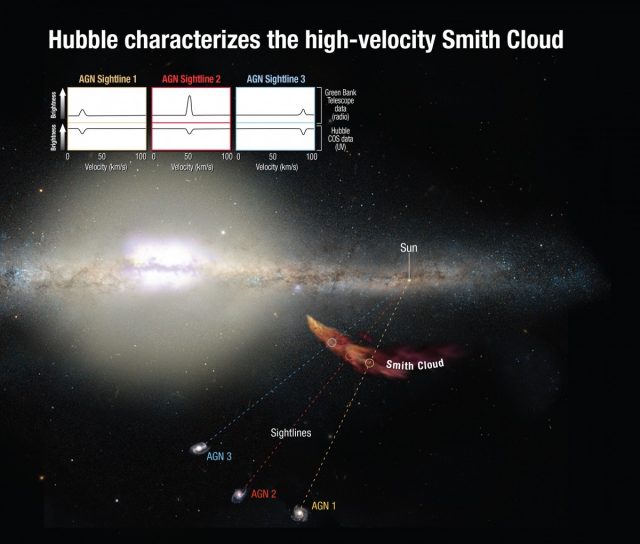MI weekly selection #166

Massive gas cloud boomeranging back to Milky Way
A massive gas cloud that was almost ejected from the Milky Way is hurtling back to our galaxy, according to findings gathered from new observations by the Hubble Space Telescope. Dubbed the Smith Cloud, it is expected to smash into the galactic plane in about 30 million years, prompting the creation of more than 2 million stars.
Scientists observe cell become cancer in transparent zebra fish
A single cell dyed fluorescent green has been observed by scientists as it began to grow into a melanoma after returning to an embryonic state, giving the researchers new clues about how cancers start, according to a study published in Science. Researchers genetically altered zebra fish with human genes because they can see their cells through their skin and don’t have to cut them open. They marked particular cells that had the gene crestin with fluorescent green, and watched as they divided and became cancer.
Babylonians devised calculation to chart Jupiter’s movements
Ancient Babylonian astronomers mathematically tracked the movements of Jupiter using a trapezoid, according to researchers who recently found a clue that helped them crack the code of several cuneiform texts that had them baffled for years. The Babylonians used the area in the trapezoid to calculate Jupiter’s position in the zodiac using a time-velocity graph. The finding puts Babylonian astronomers at least 1,500 years ahead of European scientists in understanding the ideas that led to integral calculus.
Collision that created moon was high-energy, lunar rocks suggest
The rocks that coalesced to become Earth and the moon after a collision between early Earth and an object the size of Mars show evidence that they were blended before they were broken up, indicating a high-energy impact. Researchers who examined lunar rocks from several Apollo missions found evidence that they share many isotope signatures.
A male mice with no Y chromosome
Male mice without the Y chromosome have been created by scientists at the University of Hawaii. Researchers manipulated the genes in mice that had only one X chromosome, which would normally become females. The mice developed into males able to father offspring when their immature sperm were injected into eggs.